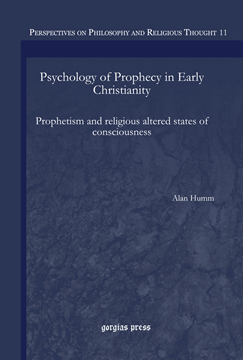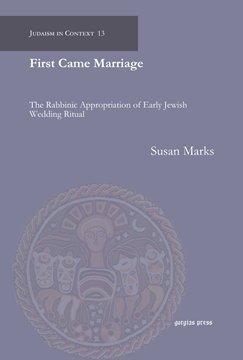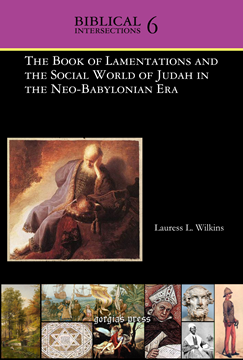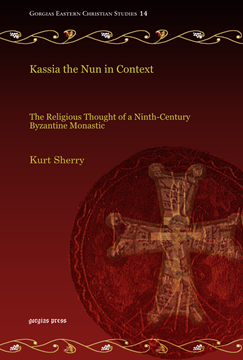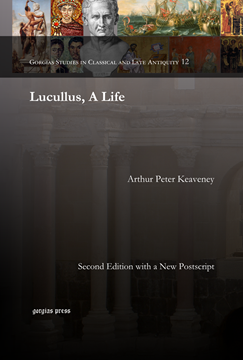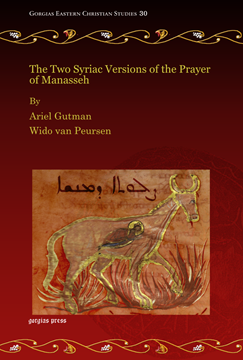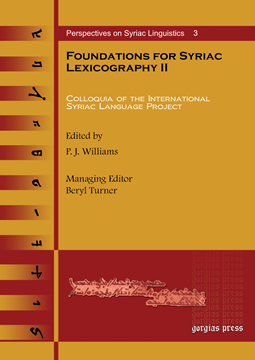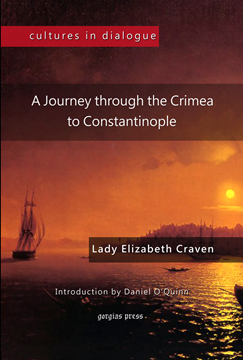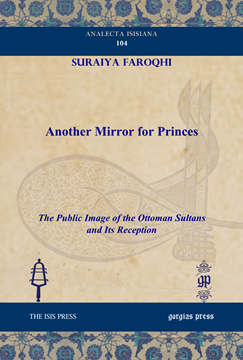Psychology of Prophecy in Early Christianity
Prophetism and religious altered states of consciousness
By Alan Humm
ISBN: 978-1-60724-618-3
Dr. Humm analyses early Christian prophetic activity seeking to understand the psychological states behind it. A system of categories is suggested based on the external appearances and subjective claims of modern phenomena. Assuming that the ancients followed the same patterns, most instances described in early Christian literature are reviewed and categorized.
$155.00 (USD) $93.00 (USD)
First Came Marriage
The Rabbinic Appropriation of Early Jewish Wedding Ritual
By Susan Marks
Series: Judaism in Context 13
ISBN: 978-1-59333-585-4
Ritual and historical perspectives each provide only a partial view of early Jewish weddings. Combining these approaches allows for a new look at practices rejected or highlighted by early rabbis and their successors, and First Came Marriage: The Rabbinic Appropriation of Early Jewish Wedding Ritual investigates the process by which early Jews married and the various moves they used to minimize, elaborate or codify these practices.
$150.00 (USD) $90.00 (USD)
The Book of Lamentations and the Social World of Judah in the Neo-Babylonian Era
Series: Biblical Intersections 6
ISBN: 978-1-60724-112-6
Using a form of social-historical criticism this book provides a counter-reading of Lamentations that elucidates the impact and aftermath of siege warfare on Judah's peasants. The rhetoric of Lamentations, ancient Near Eastern writings, and archaeological evidence are considered, along with social models from other agrarian societies. Together these shed light on the changing social dynamics, religious customs, and political and economic structures of rural and urban Judah in the sixth century BCE. This study brings to life voices long silent, and suggests that Judah's peasants played a significant role in the survival of peasant and city-dweller alike, when Jerusalem fell.
$152.00 (USD) $91.20 (USD)
Kassia the Nun in Context
The Religious Thought of a Ninth-Century Byzantine Monastic
By Kurt Sherry
Series: Gorgias Eastern Christian Studies 14
ISBN: 978-1-61143-969-4
Kassia the Nun offers a unique glimpse into ninth-century Byzantium in the only woman whose works were included in the corpus of liturgical hymns. This volume explores Kassia’s thought on Christology, on gender, and on monasticism itself. It provides readers with an opportunity to know this woman of remarkable intellect, wit, and piety by drawing primarily on her own words. Kassia’s is one of the only female voices from ninth-century Byzantium and this volume accordingly examines her reflections on gender in the context of her society and concludes that she represents a perspective that might be described as feminist.
$123.00 (USD) $73.80 (USD)
Lucullus, A Life
ISBN: 978-1-60724-078-5
While Lucullus is one of the great figures of the late Roman republic, his achievements have been overshadowed by a reputation for luxurious living. This book explodes the legend and restores Lucullus to his true position as soldier, politician and aesthete.
$168.00 (USD) $100.80 (USD)
The Two Syriac Versions of the Prayer of Manasseh
Series: Gorgias Eastern Christian Studies 30
ISBN: 978-1-4632-0050-3
The authors present a detailed philological and linguistic comparison of two versions of The Prayer of Manasseh. Combing state-of-the-art computational tools together with traditional philology, the texts are compared at all linguistic levels, from their vocabulary up to their discursive structure, with a special emphasis on their morphology and syntax. The results are revealing not only for the question of the relationship between the two versions, but they also illuminate various debates pertaining to Syriac syntax.
$184.00 (USD) $110.40 (USD)
Jacob of Sarug’s Homily on the Partaking of the Holy Mysteries
Translation and Introduction by Amir Harrak
Series: Texts from Christian Late Antiquity 19
ISBN: 978-1-60724-086-0
This edition of Mar Jacob of Sarug's (d. 521) homily on Partaking in the Holy Mysteries is one of Jacob’s memre on the sacraments. In this homily, Jacob is shocked that some of his congregants are leaving the service early, before the eucharist has been celebrated. He emphasizes the importance of the liturgical celebrations for a Christian life in a message still applicable today. The volume constitutes a fascicle of The Metrical Homilies of Mar Jacob of Sarug, which, when complete, will contain the original Syriac text of Jacob's surviving sermons, fully vocalized, alongside an annotated English translation.
$31.00 (USD) $18.60 (USD)
Foundations for Syriac Lexicography II
Colloquia of the International Syriac Language Project
Edited by P. J. Williams; Managing Editor Beryl Turner
Series: Perspectives on Syriac Linguistics 3
ISBN: 978-1-60724-088-4
This volume is part of a series that addresses issues of Classical Syriac lexicography, and the lexicography of other ancient languages. The international team of authors invited to participate represents a wide range of disciplines and opens new horizons in lexical thinking. Essays in this volume discuss taxonomy, the Syriac passive participle, translating Greek verbs with alpha privatives into Syriac, the translation of Syriac particles, and the history of Syriac lexica. This book represents the forefront of Syriac lexical studies, and has much to offer those studying Greek and other Semitic languages as well.
$138.00 (USD) $82.80 (USD)
Journey through the Crimea to Constantinople
By Elizabeth Craven; Introduction by Daniel O'Quinn
Series: Cultures in Dialogue: Second Series 1
ISBN: 978-1-60724-087-7
Written by one of the most scandalous figures in the beau monde and published just prior to the French Revolution, A Journey through the Crimea to Constantinople (1789) transported readers to the most exclusive courts of Russia and the Ottoman Empire.
$196.00 (USD) $117.60 (USD)
Another Mirror for Princes
The Public Image of the Ottoman Sultans and Its Reception
Series: Analecta Isisiana: Ottoman and Turkish Studies 104
ISBN: 978-1-60724-089-1
This book is a collection of essays on Ottoman history, focusing on how sultans of the Ottoman Empire were viewed by the public.
$157.00 (USD) $94.20 (USD)
